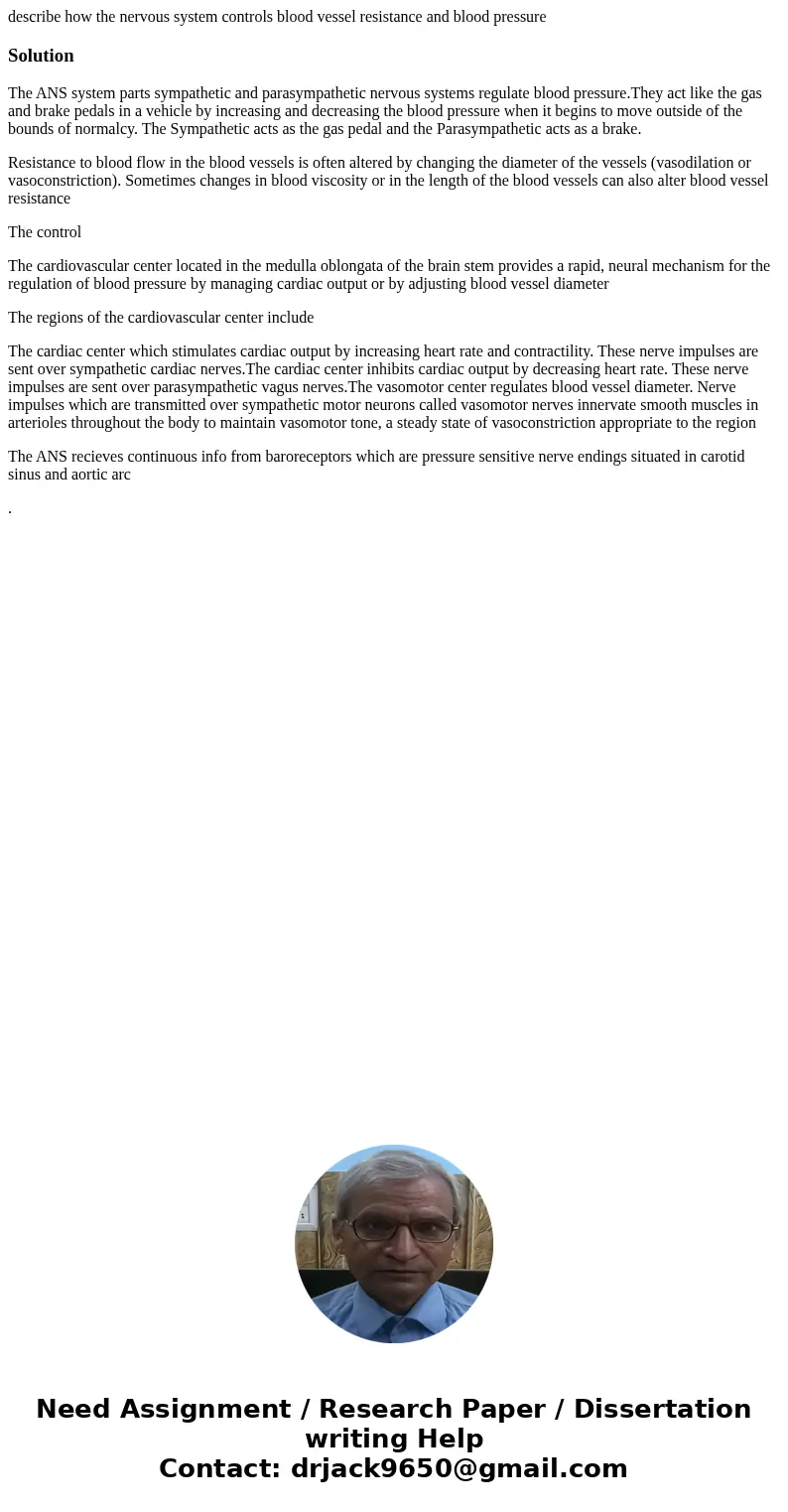describe how the nervous system controls blood vessel resist
describe how the nervous system controls blood vessel resistance and blood pressure
Solution
The ANS system parts sympathetic and parasympathetic nervous systems regulate blood pressure.They act like the gas and brake pedals in a vehicle by increasing and decreasing the blood pressure when it begins to move outside of the bounds of normalcy. The Sympathetic acts as the gas pedal and the Parasympathetic acts as a brake.
Resistance to blood flow in the blood vessels is often altered by changing the diameter of the vessels (vasodilation or vasoconstriction). Sometimes changes in blood viscosity or in the length of the blood vessels can also alter blood vessel resistance
The control
The cardiovascular center located in the medulla oblongata of the brain stem provides a rapid, neural mechanism for the regulation of blood pressure by managing cardiac output or by adjusting blood vessel diameter
The regions of the cardiovascular center include
The cardiac center which stimulates cardiac output by increasing heart rate and contractility. These nerve impulses are sent over sympathetic cardiac nerves.The cardiac center inhibits cardiac output by decreasing heart rate. These nerve impulses are sent over parasympathetic vagus nerves.The vasomotor center regulates blood vessel diameter. Nerve impulses which are transmitted over sympathetic motor neurons called vasomotor nerves innervate smooth muscles in arterioles throughout the body to maintain vasomotor tone, a steady state of vasoconstriction appropriate to the region
The ANS recieves continuous info from baroreceptors which are pressure sensitive nerve endings situated in carotid sinus and aortic arc
.

 Homework Sourse
Homework Sourse